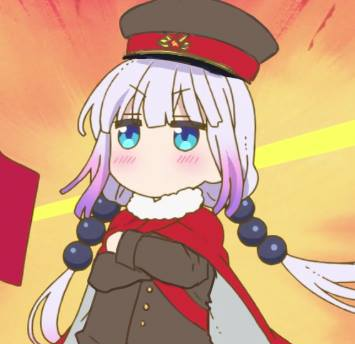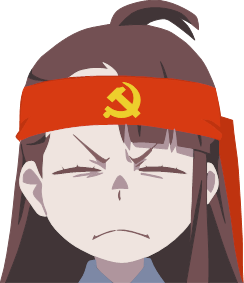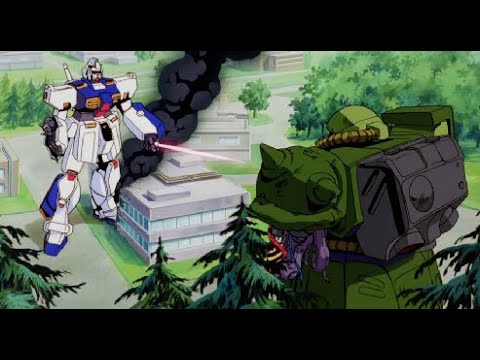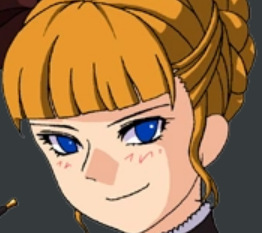i feel like an asshole saying this, but this guy seems confused by the concept of fiction. people have literally always made fiction about cool fighters who could singlehandedly change the courses of war. like, that's gilgamesh. that's the illiad. it's not unique to mecha. this is like that guy who posted "john wick is a bad movie because keanu reeves could not actually kill all those guys," i don't think this is an interesting critique
also i don't know if this is just me, but bringing up the antisemitic shit tomino said and then immediately saying "this is a specifically japanese mentality" about thinking it's cool when the main character fights guys in ways that matter and affect the plot has bad vibes to me
oof I didn't know Tomino was/is an antisemite. Yikes.
yeah he said some fucked shit in the zeta pitch. i'm not aware of much outside that, so maybe he's changed but i couldn't say
Sucks, I have to take my support for him down a notch.
I'll drop this interview from when the blurays came out for V Gundam in 2015, the series having aired in 1993.
—When it comes to V Gundam, people often talk about harsh aspects such as Katejina's betrayal and the death of Myra Miggelle. But when you rewatch it, you realize that the narrative progresses from the children's viewpoint, and there are also many wholesome scenes where they seem to be playing happily.
Tomino: My aim was to have many scenes of the children. That's because the character I liked best—should I just say I liked her? no, I really did like her best—was Katejina Loos. Katejina is a character who's completely rejected, but if I were going to take her story in that direction, then I had to deliberately include those kinds of depictions of the children as a counterpoint.
It's just something I did out of the arrogance I had before my depression, but I don't like how the deepening of Katejina's character tends to become simply a return to the womb. At the time, I did that thinking it might constitute realism. I discussed this indirectly in my "Encyclopedia" interview, but in hindsight that meant her character, which was already ambiguous, became blurry again in the final episode.
—Still, I think the ending of the final episode is a great scene because the direction suddenly makes that clear.
Tomino: Watching the final episode on its own, it may seem like a half-baked finale, but I'd intended to go in that direction from the very beginning. That was the established plan. In other words, it was the only way we could do something like that.
The thing I felt really bad about when V Gundam ended up being a boring anime was that the photography department apologized to me after the series was over. "We're sorry that we couldn't shoot it well," they said. But the failings of V Gundam weren't because of such technical issues. The biggest problem there was a mistake I myself made, and I was really bothered that they were apologizing for it.
—Nonetheless, I had no idea you were so fond of Katejina.
Tomino: Really? I like the name "Katejina Loos," too... The reason it suddenly occurred to me to bring that up is because just one hour ago, I remembered the source of the name "Katejina."
—Wait, there was a source?
Tomino: Mmm... I don't think most people nowadays would know this, but given the name of the Katejina character and the keyword "Eastern European literature," knowledgeable people should instantly be able to place it. (7) I saw it in a volume of an Eastern European literature collection some time ago, and I wanted to imbue Katejina with the feeling I found there.
※ This story appears to be A Prayer for Kateřina Horovitzová by the Czech Jewish author Arnošt Lustig, which was included in "Complete Works of Modern Eastern European Literature 11" (KobunSha).
The story I read there was about Jewish people in the Holocaust during World War II. As I was reading it, I thought about creating Katejina as a character who sees herself as the perpetrator, for whom fighting as a combatant is nothing but killing something inside herself. For a while I completely forgot about it, but a few years ago I happened to see that book of Eastern European literature on a bookshelf and recalled "Oh, that's right."
—So the character of Katejina came from Eastern European literature, then? It's like the anecdote about how the name of the protagonist Kamille in Z Gundam came from the female sculptor Camille Claudel.
Tomino: They're nothing alike. I was trying to do something much more impactful with Katejina. So when it comes to her voluptuousness, that's derived from the sturdy attributes that endure within her Jewish heritage. (8)
—Oh, so that's also why Katejina's father Tenglacy Loos is depicted as being so short...
Tomino: It's no coincidence. I did that because I thought I'd seem lazy unless I put that much effort into it, but ideas like that were a byproduct of over-seriousness. Even when I'm taking about it now, I want to say "You're just making anime, so would you stop doing things like that?" (laughs)
—Hearing that it's rooted in Eastern European literature, I can understand why the narrative begins and ends in Kasareria.
Tomino: Eastern European literature has a unique atmosphere, but I think that kind of introverted, refractive feeling is something Japanese people don't understand at all, so it's hard to get used to it. They have a history of being occupied over and over again, without acknowledging it even though they're enduring it every day as they live their lives. And then if you're Jewish, you're in an even more complicated social position...
When I went to Prague to record the V Gundam soundtrack, I wandered out as far as Auschwitz. This was before it became a World Heritage site, so it wasn't as well maintained as it is now. I couldn't bring myself to look at the incinerator, so I was just looking at the surrounding scenery while I basked in the sun by a building at the entrance. The women walking by outside the site were cheerful, with sturdy, healthy physiques. I had the strange sensation that these women, the anxieties in Eastern European literature, and the Holocaust that once took place were all overlapping without overlapping. But that experience gave me the conviction that Katejina's direction wasn't a mistake.
So V Gundam became a mixture of the feeling that I had to do something with this Katejina, and my frustration about the tire battleships.
(7) The phonetic characters カテジーナ, written as "Katejina" in the case of the V Gundam character, are also used for the Czech name Kateřina.
(8) The term 肉感論 (nikkan-ron) means something like "discussion of sensuality," while the adjective 骨太 (honebuto), literally "big-boned," means something like "sturdily built," "stocky," or metaphorically "solid." Tomino goes on to use the latter term to describe the physical appearance of Eastern European women, and the interviewer segues to a comment about her father's height, so I think Tomino is literally just saying that Katejina is short and curvy.
From here. I think he definitely broadened his understanding over the course of his life and got a lot better and more nuanced with matters like ethnicity, which I think shows in Turn A and G-Reco. I've also got to wonder how many such stereotypes were part of the ambient xenophobia in the culture of postwar Japan - it's disappointing he would pitch such a character, but ultimately he cut that from Zeta which did end up as a basically anti-imperialist story. Later in the interview talking about themes of war and ethnicity he mentions reading Hannah Arendt and... well, trading out one set of brainworms for another I guess, but still.
I found a YouTube link in your post. Here are links to the same video on alternative frontends that protect your privacy:





